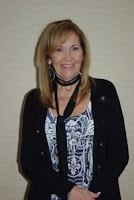From James Beck, Ph.D., Vice President of Scientific Affairs
Using old drugs as new cures seems like a surefire winner. It may be. However, after attending a recent meeting outside London hosted by the Cure Parkinson’s Trust, a small yet impactful British charity, it is clear that this path is neither clear nor easy. A committee of experts at the meeting evaluated and prioritized dozens of existing compounds – many are drugs used to treat other diseases – based upon their potential to stop Parkinson’s disease.
 |
| From left, James Beck, Tom Isaacs, and Steven DeWitte at Cure Parkinson's Trust meeting at Cumberland Lodge. |
Repurposing drugs for a new use like this has the potential to shave significant time from the drug development process for Parkinson’s. But existing drugs come with existing problems. And these problems cannot always be overcome. For instance, a recent science article covered by PDF suggested that a chemotherapeutic agent, nilotinib, might be useful for treating PD. However, it is not clear what the proper dose should be (the article suggested a low one would be effective). Moreover, with potential side effects that include sudden death, the committee felt it was not ethical to consider placing people living with PD in potential danger.
Still, there are drugs that appear to be safe and well tolerated, like statins used to lower cholesterol and metformin used for type II diabetes to name a few. These drugs are not chosen at random: By surveying thousands of people, epidemiology studies have been able to link drugs people take for other conditions (like these) with a lower risk of developing PD. There are also data from laboratory studies that suggest how these types of drugs may help. Even here, though, the path forward is not so clear. The mechanism of action, that is how might some of these drugs actually affect PD in people, is not known. This is not always a stumbling block; but when combined with drugs that are likely to have modest effects and low odds of success, it can be a problem, especially with limited resources.
Recognizing these issues, the Trust’s prioritization committee took a hard look at each potential drug candidate and recommended a handful as most promising. These few culled from a list of two dozen compounds will now advance towards evaluation in clinical trials. Hopefully, that phase will begin soon.


















